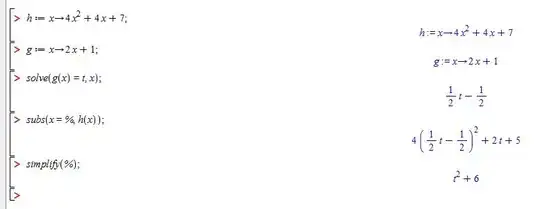Here is just an simple example that I want to use Maple to solve: $$h(x)=f(g(x))$$ $$g(x)=2x+1$$ $$h(x)=4x^2+4x+7$$
Find polynomial of $f(x)$
Thanks :)

The desire function is the last output as you see. Thanks.
For fun,
> h:=x->4*x^2+4*x+7:
> g:=x->2*x+1:
> rsolve( f(g(x)) = h(x), f(x) );
2
x + 6